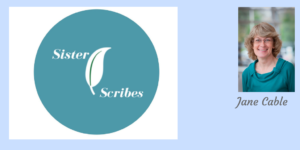It’s always a scary moment when your favourite restaurant announces a new dining experience. Exciting too, but for me the predominant thought was ‘please, please, don’t mess this up.’ Especially when for us, it’s a seven hour drive to get there.
I need not have worried. The friendly welcome from Janet at reception, the freshly baked gluten free cakes waiting in our gorgeous room; our stay started on a resounding high. We even had time for our favourite walk out to the Humber and through the village – a place I love so much I set Endless Skies there.
 But dinner was, of course, the main event. And dinner was the part that had changed. A new dining room, now advertised as being part of the kitchen, hidden behind a curtain as you take your pre-dinner drinks and snacks (oh, what snacks!) in a cosy new bar. And when you are ready, you are led down the hallways of the old farmhouse and into the bright, modern kitchen.
But dinner was, of course, the main event. And dinner was the part that had changed. A new dining room, now advertised as being part of the kitchen, hidden behind a curtain as you take your pre-dinner drinks and snacks (oh, what snacks!) in a cosy new bar. And when you are ready, you are led down the hallways of the old farmhouse and into the bright, modern kitchen.
We were greeted by James, the sous chef, as Gareth, the head chef, was unwell. He told us not to worry, we were in safe hands, and we definitely were. And this is all part of the experience; you feel you get to know the chefs a little as you work your way through the courses. Think chef’s table, but brought to a whole dining room, and in a relaxed and friendly manner.
 After chatting to James over a delicious bowl of lovage soup (food miles are second only to ingredient quality at Winteringham Fields, and lovage had come just a few yards from the bed in the garden outside) we were taken to our table, which had a great view of the pass so we could see and hear everything that was going on. It takes great confidence in your team to open a kitchen to that extent; some guests who hadn’t visited before were even invited to walk around.
After chatting to James over a delicious bowl of lovage soup (food miles are second only to ingredient quality at Winteringham Fields, and lovage had come just a few yards from the bed in the garden outside) we were taken to our table, which had a great view of the pass so we could see and hear everything that was going on. It takes great confidence in your team to open a kitchen to that extent; some guests who hadn’t visited before were even invited to walk around.
Dinner at Winteringham Fields is a lavish tasting menu, and we always play a game where we rank the courses in order. This time there was a clear winner; the Isle of Wight heritage tomatoes with watermelon, ponzu and nori. Tomatoes and watermelon? Who knew? And the consommé was one of the most spectacular things I have ever tasted. Almost as good as the langoustine terrine we had on our first visit… and when I told chef James about this he said he would try to track down the recipe.
 We discussed our second favourite course for a very long time, without really coming to a conclusion. The huge hand dived scallop in laksa sauce was genius, but the lamb belly with asparagus, curds and mint such a clever blend of flavours and so completely melt in the mouth, it was hard to separate them. And both dessert (Winteringham Fields’ take on a Solero with mango, passion fruit, coconut and basil) and the lemon, thyme and honeycomb pre-dessert, were top notch.
We discussed our second favourite course for a very long time, without really coming to a conclusion. The huge hand dived scallop in laksa sauce was genius, but the lamb belly with asparagus, curds and mint such a clever blend of flavours and so completely melt in the mouth, it was hard to separate them. And both dessert (Winteringham Fields’ take on a Solero with mango, passion fruit, coconut and basil) and the lemon, thyme and honeycomb pre-dessert, were top notch.
Each course is brought to the table and introduced by the chef who prepared it, with as much or as little information as you like. It isn’t formal or stiff, there is genuine enthusiasm here, especially from the young lady who cooked the duck. The amount of care and attention poured into the dish was astonishing – and it showed.
So I need not have worried. Yes, it’s expensive. Yes, it’s a treat, but I would rather save up to eat here a couple of times a year than have pub grub every other week. Winteringham Fields, once again, you have smashed it!
All photos courtesy of Winteringham Fields, who have extended their midweek offers to cover the whole summer. Find out more here: https://winteringhamfields.co.uk/



















